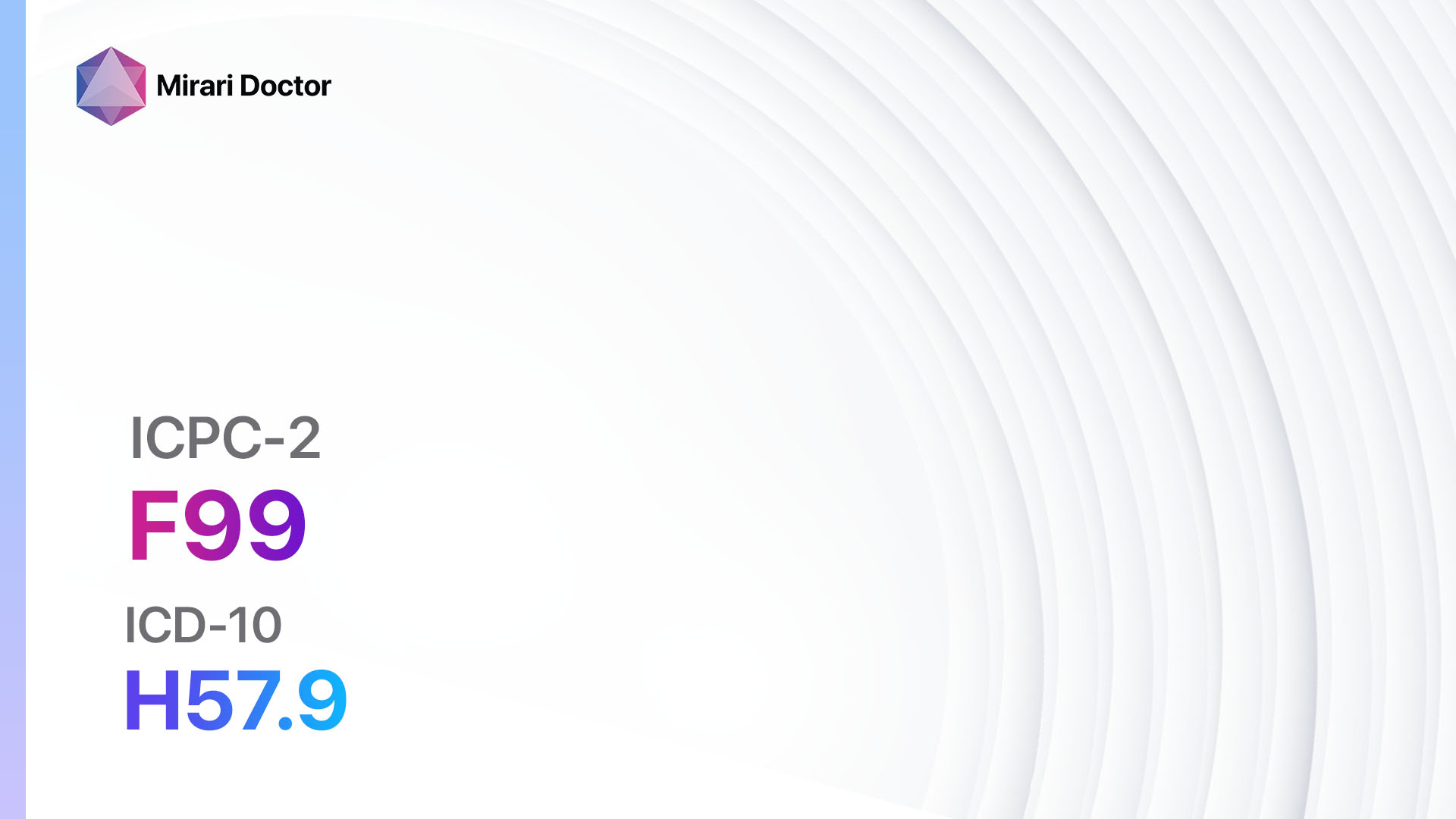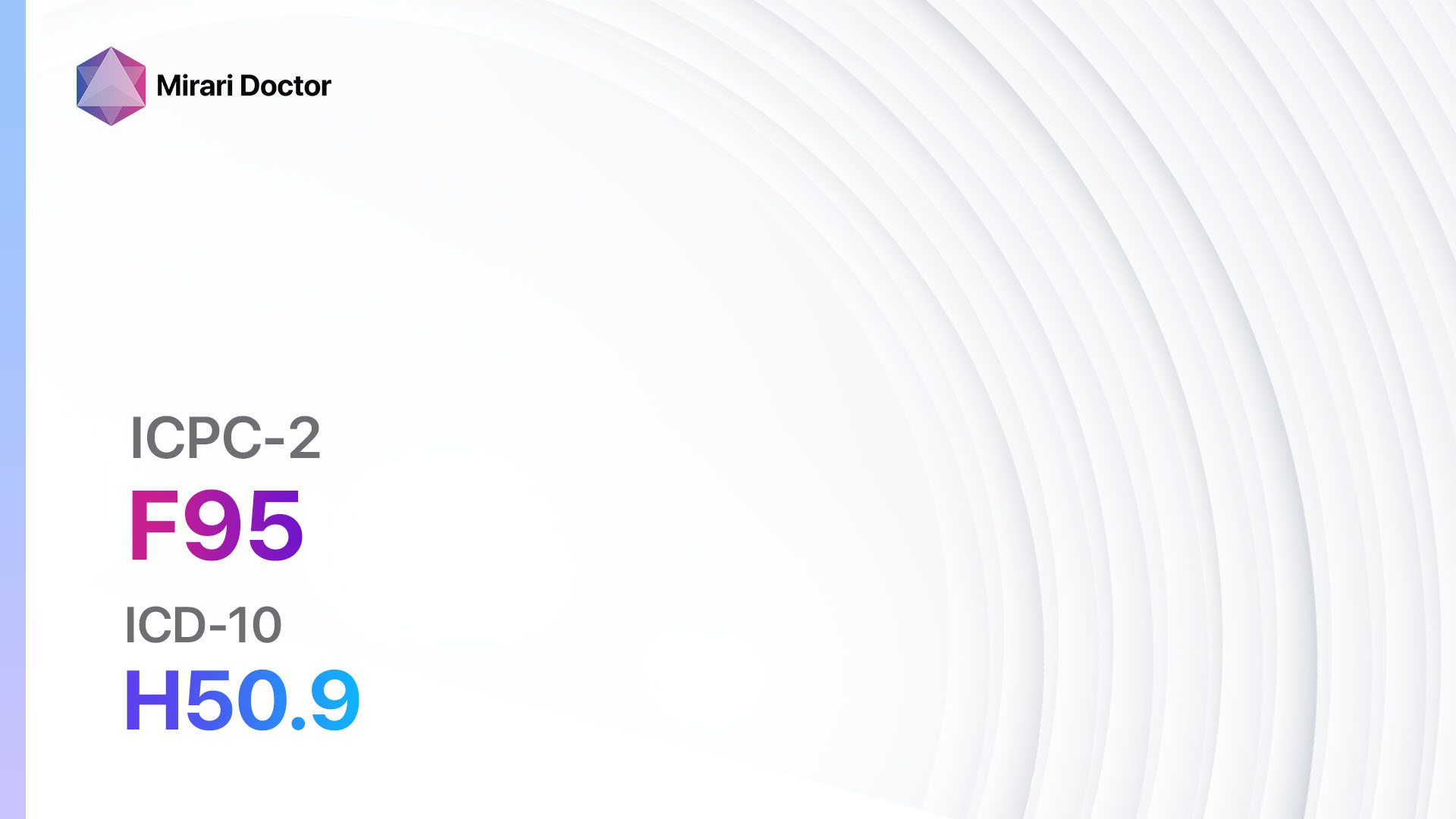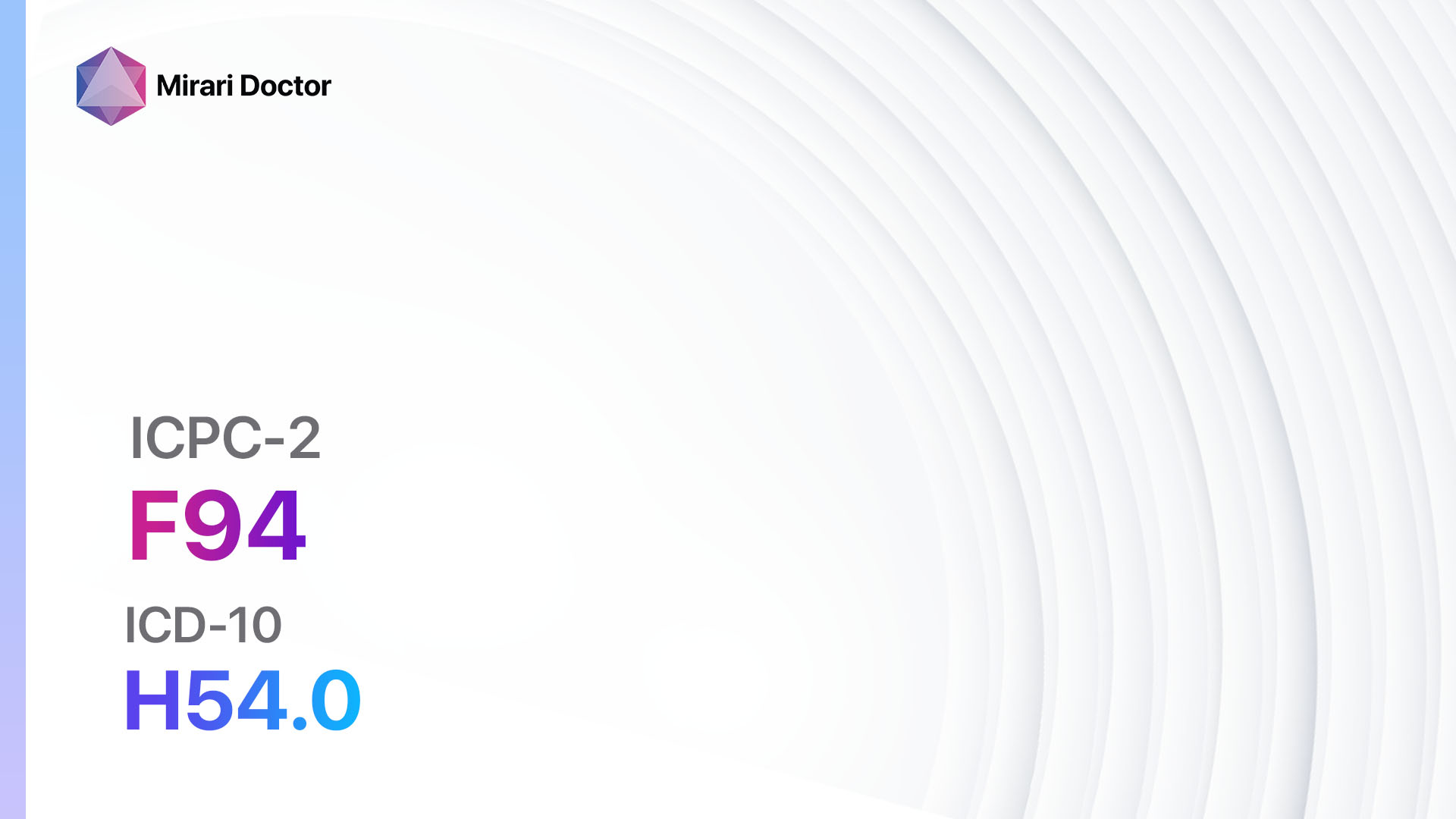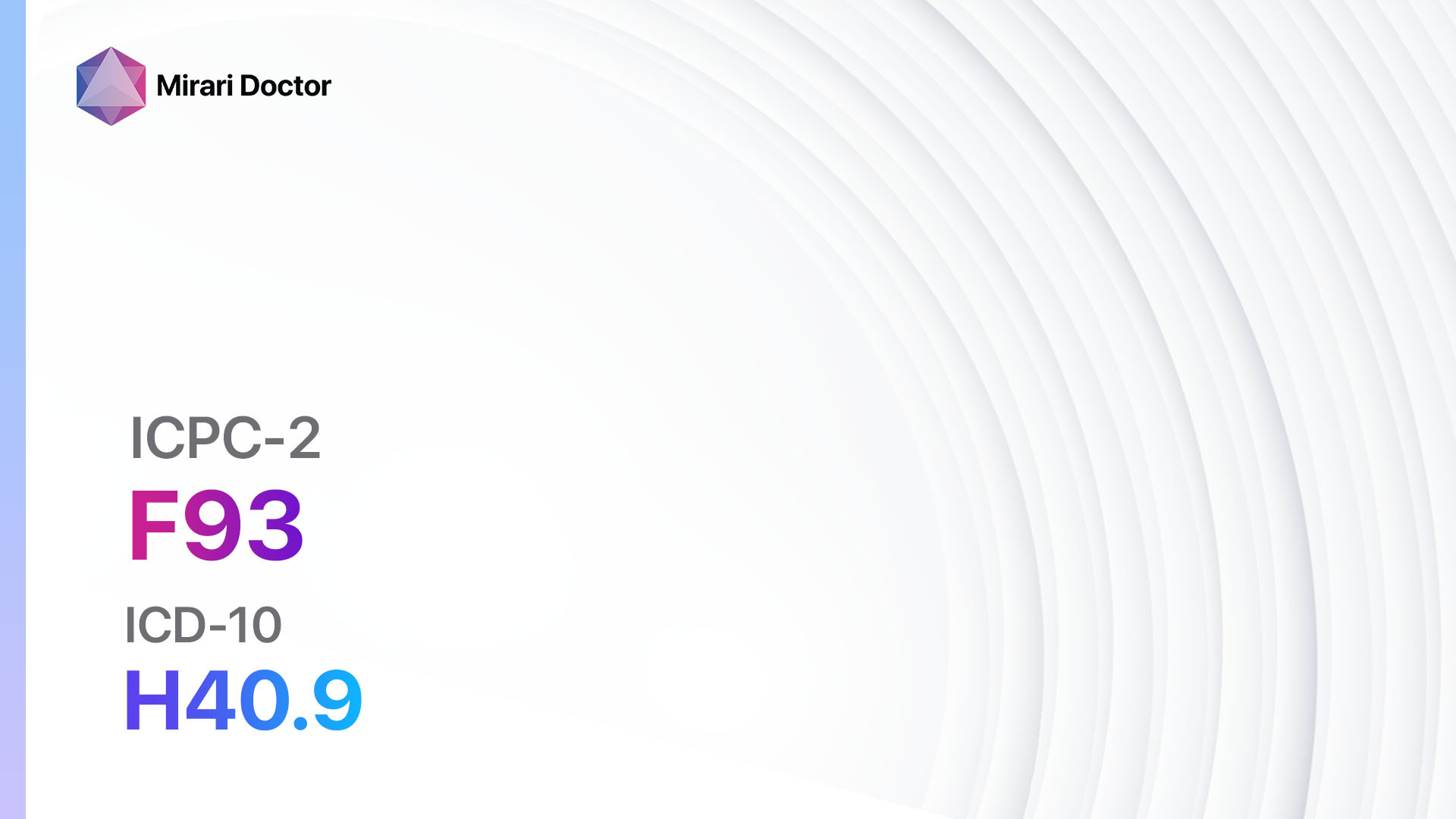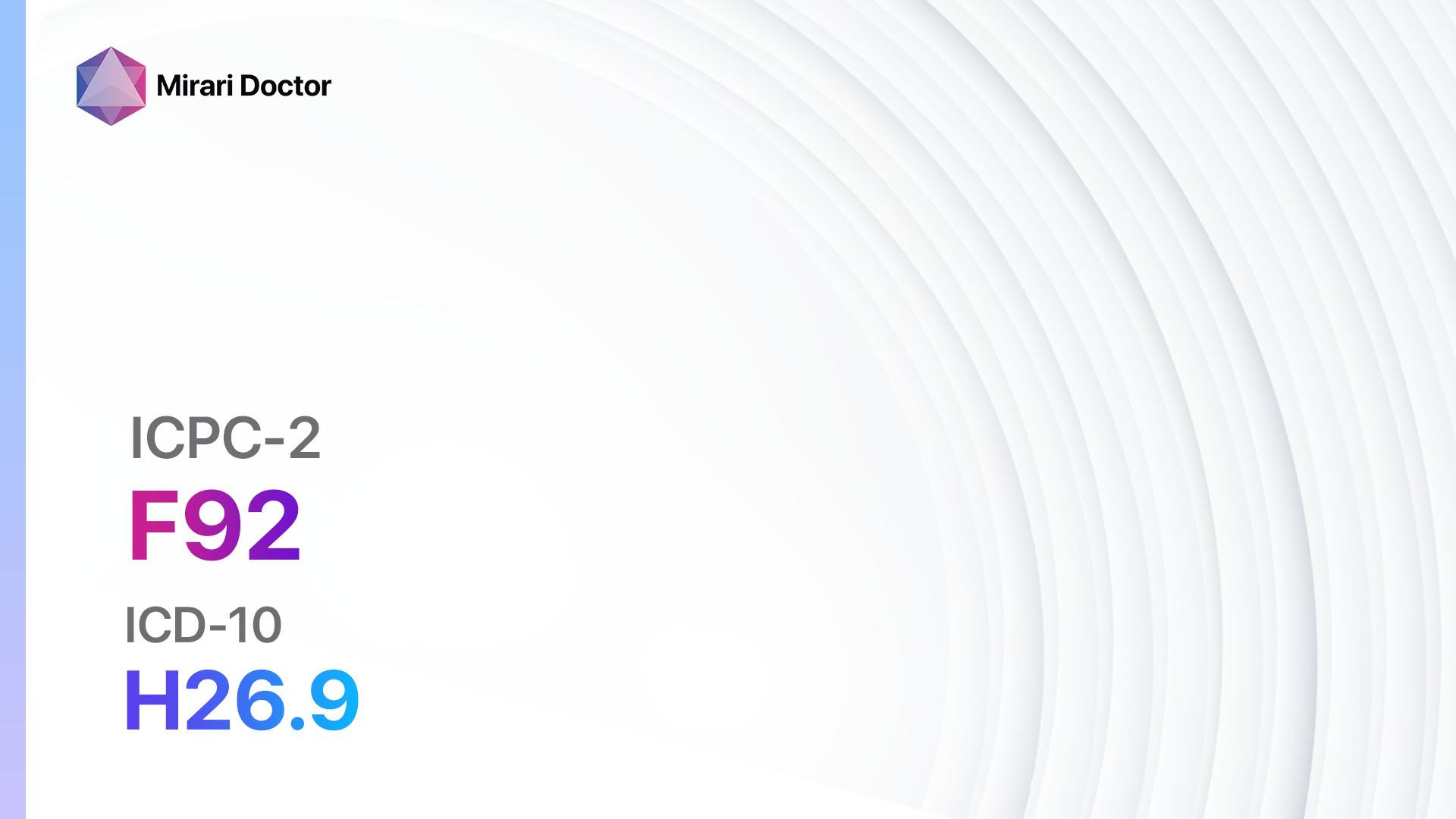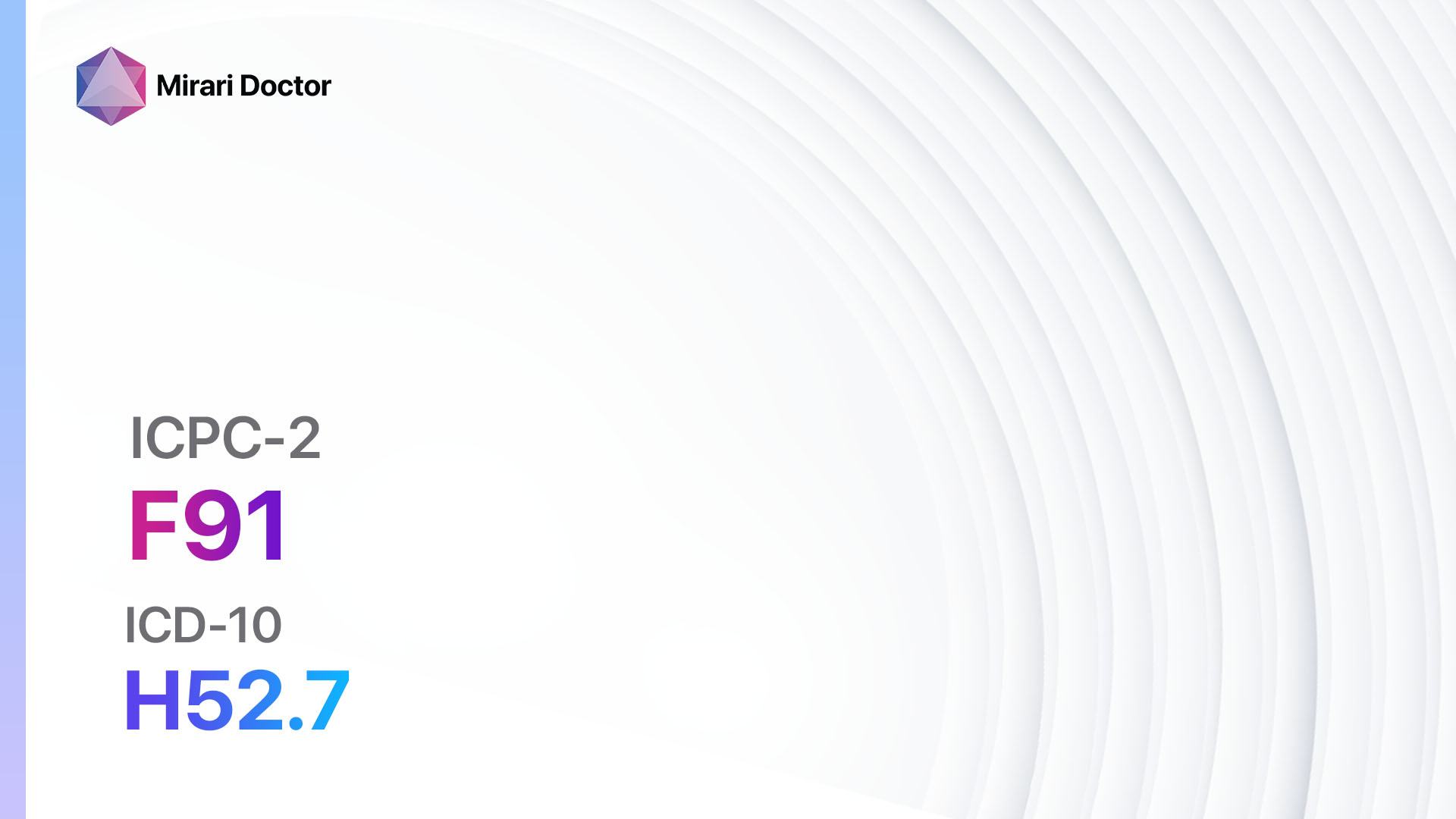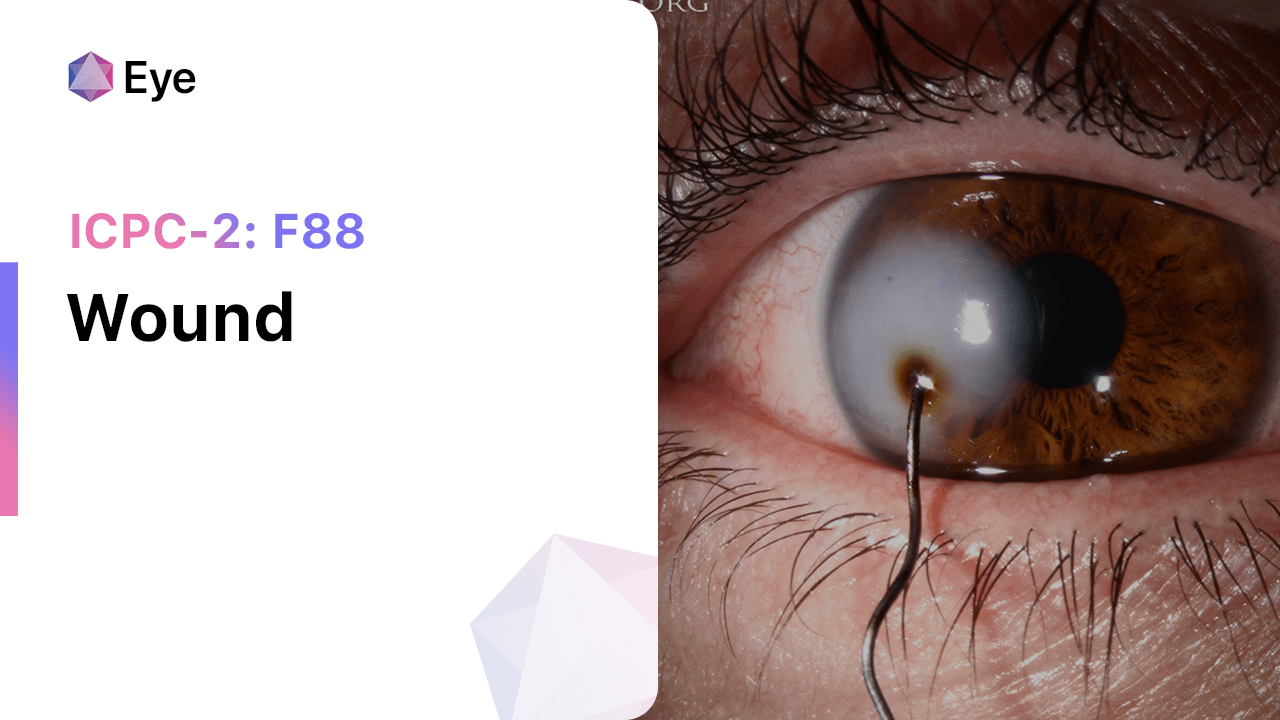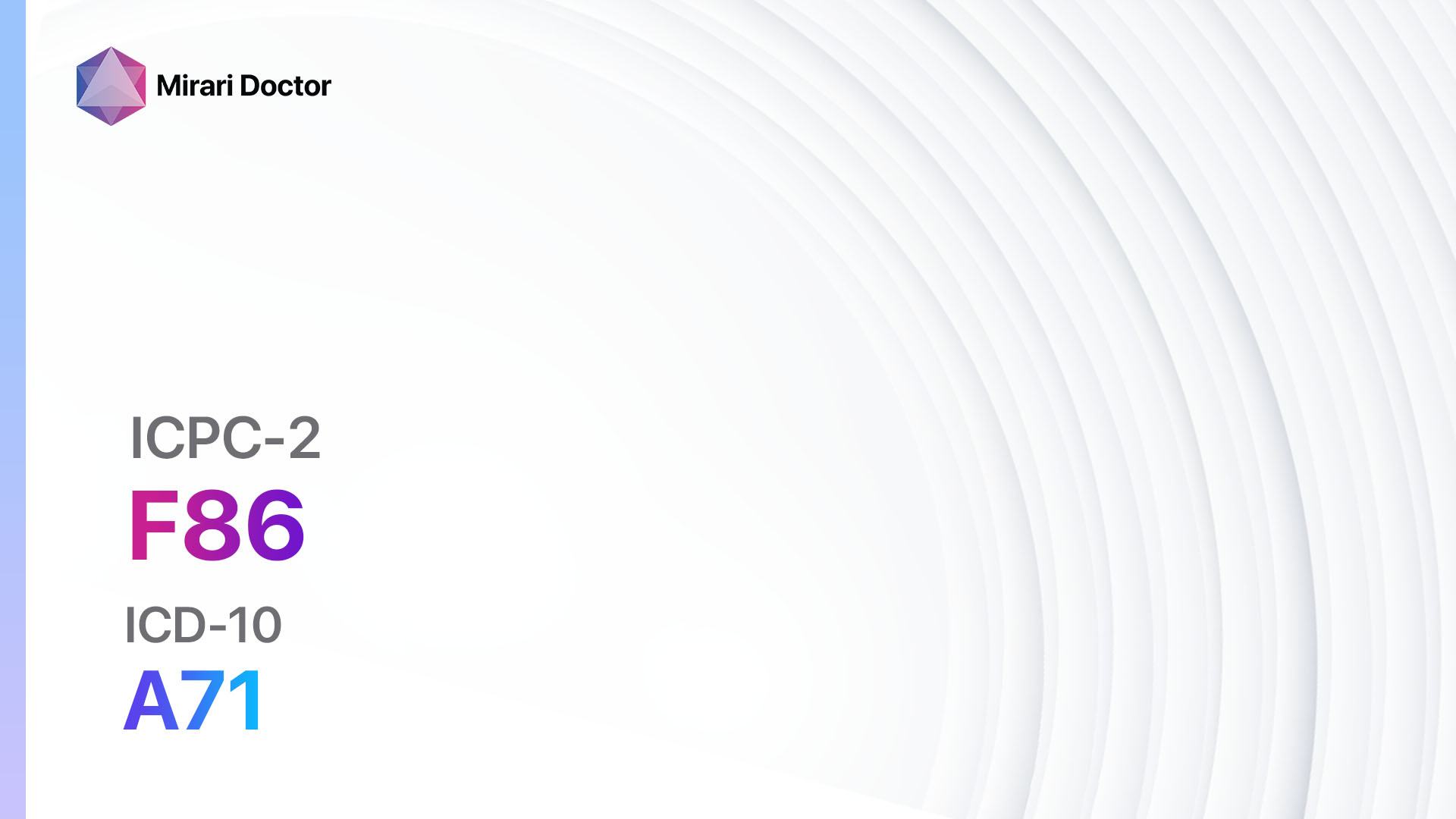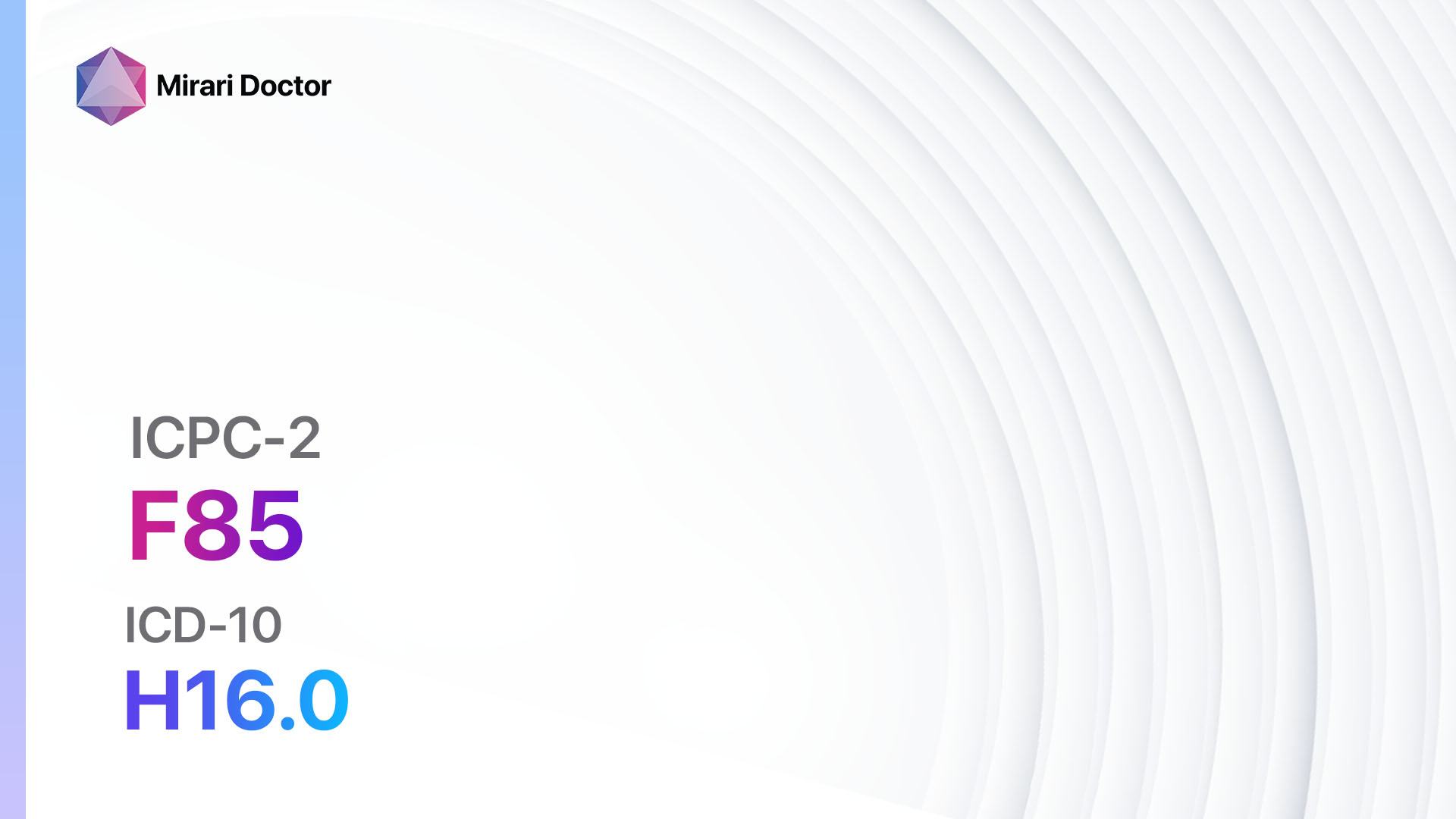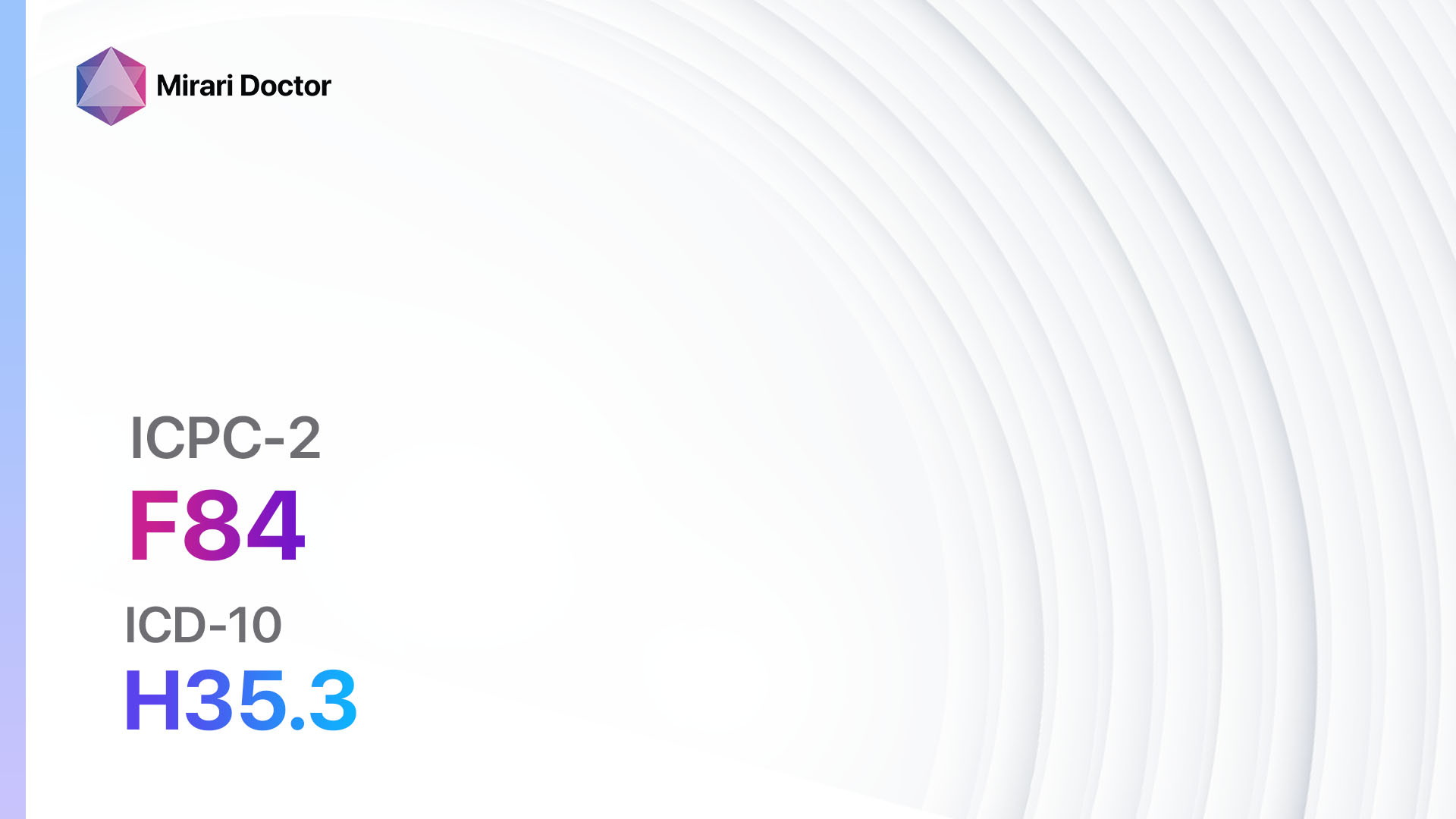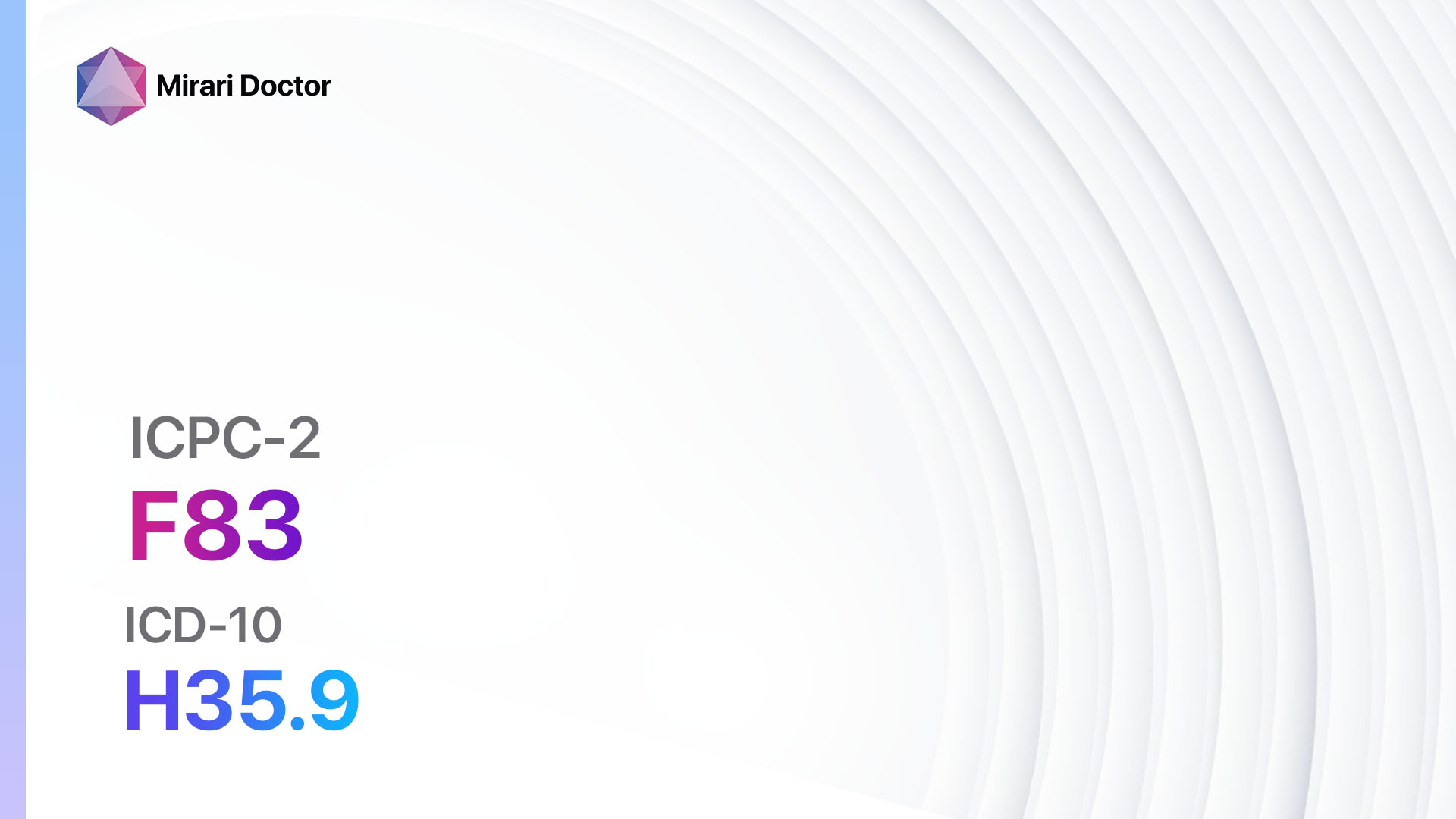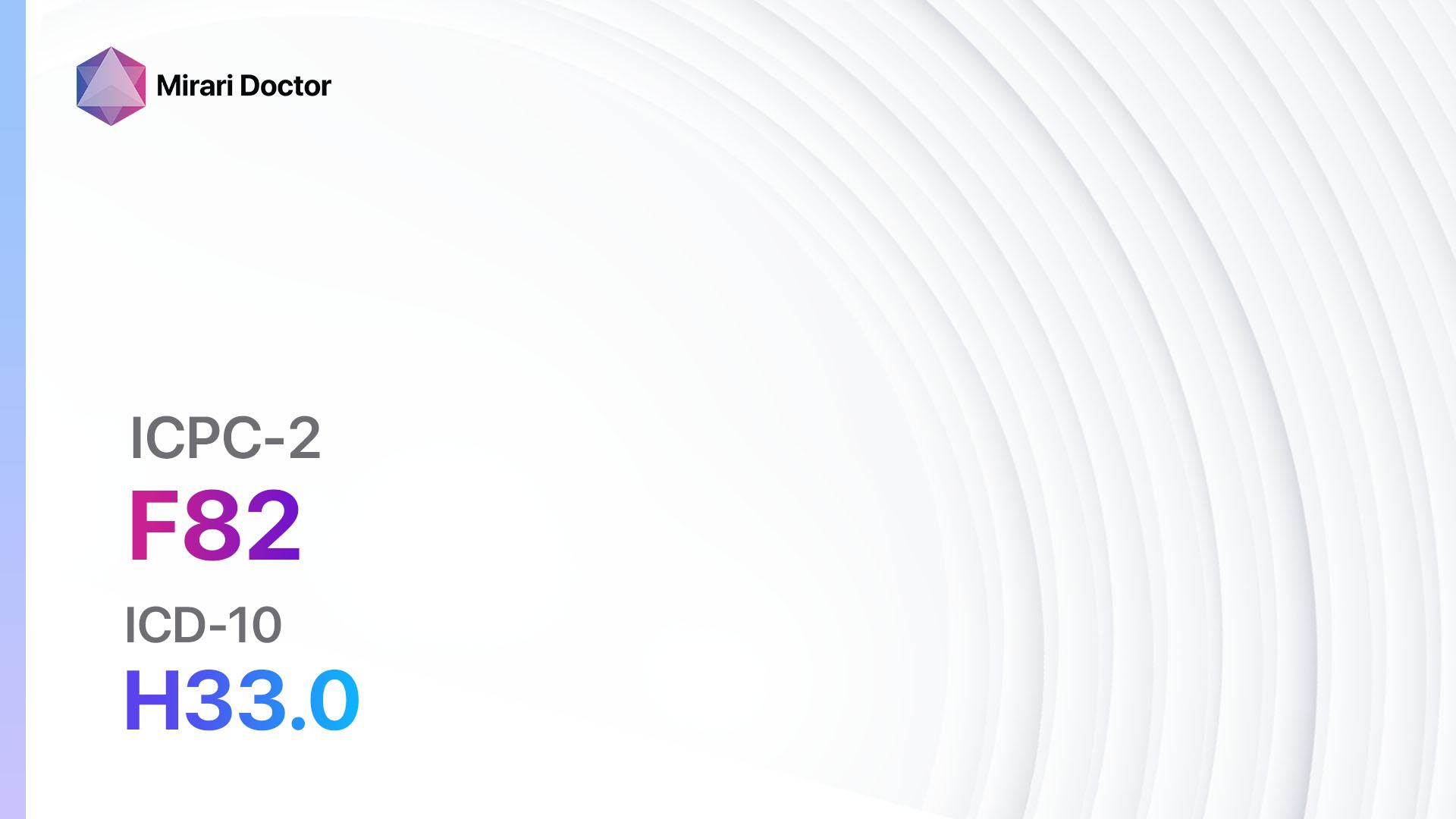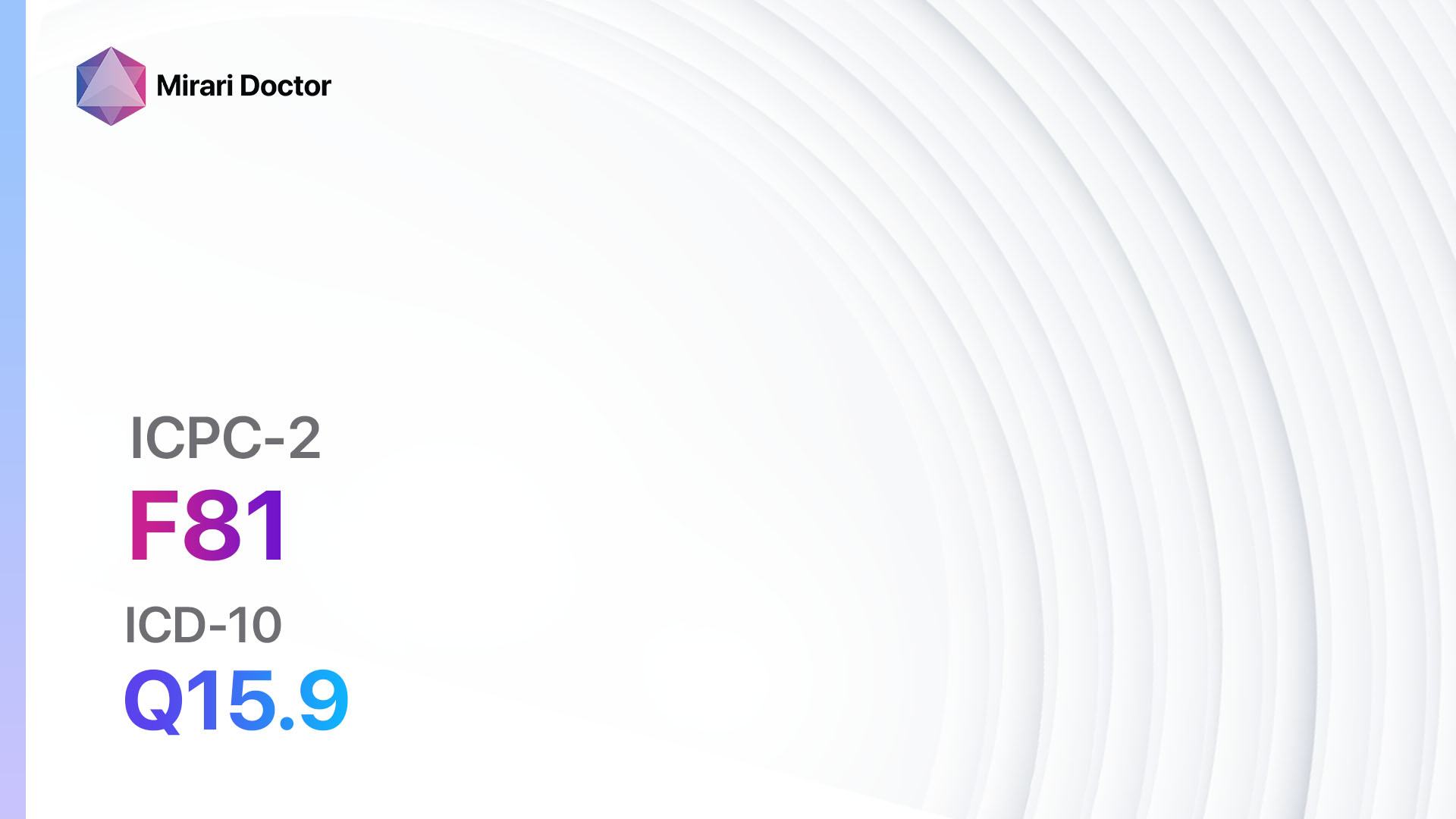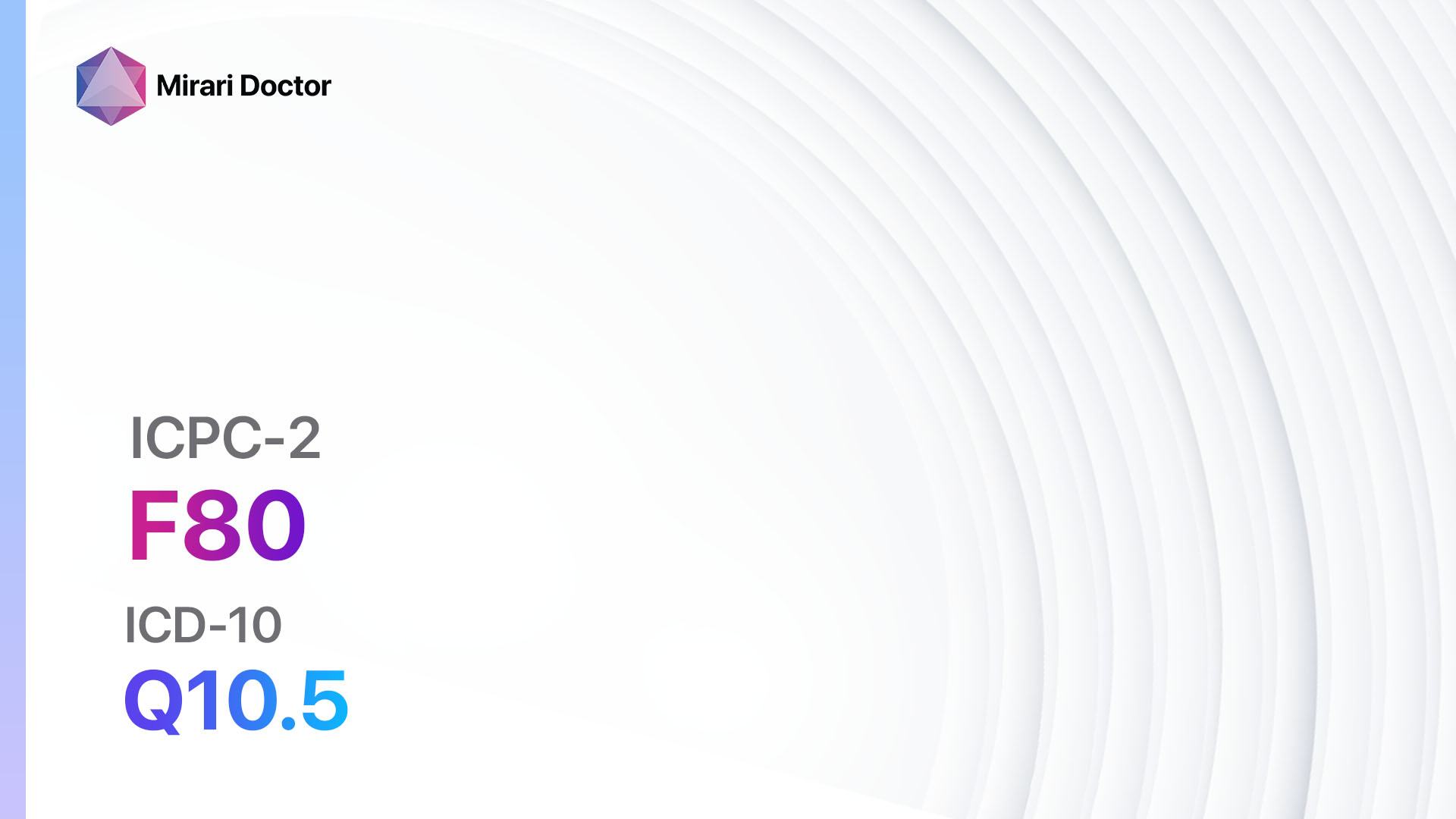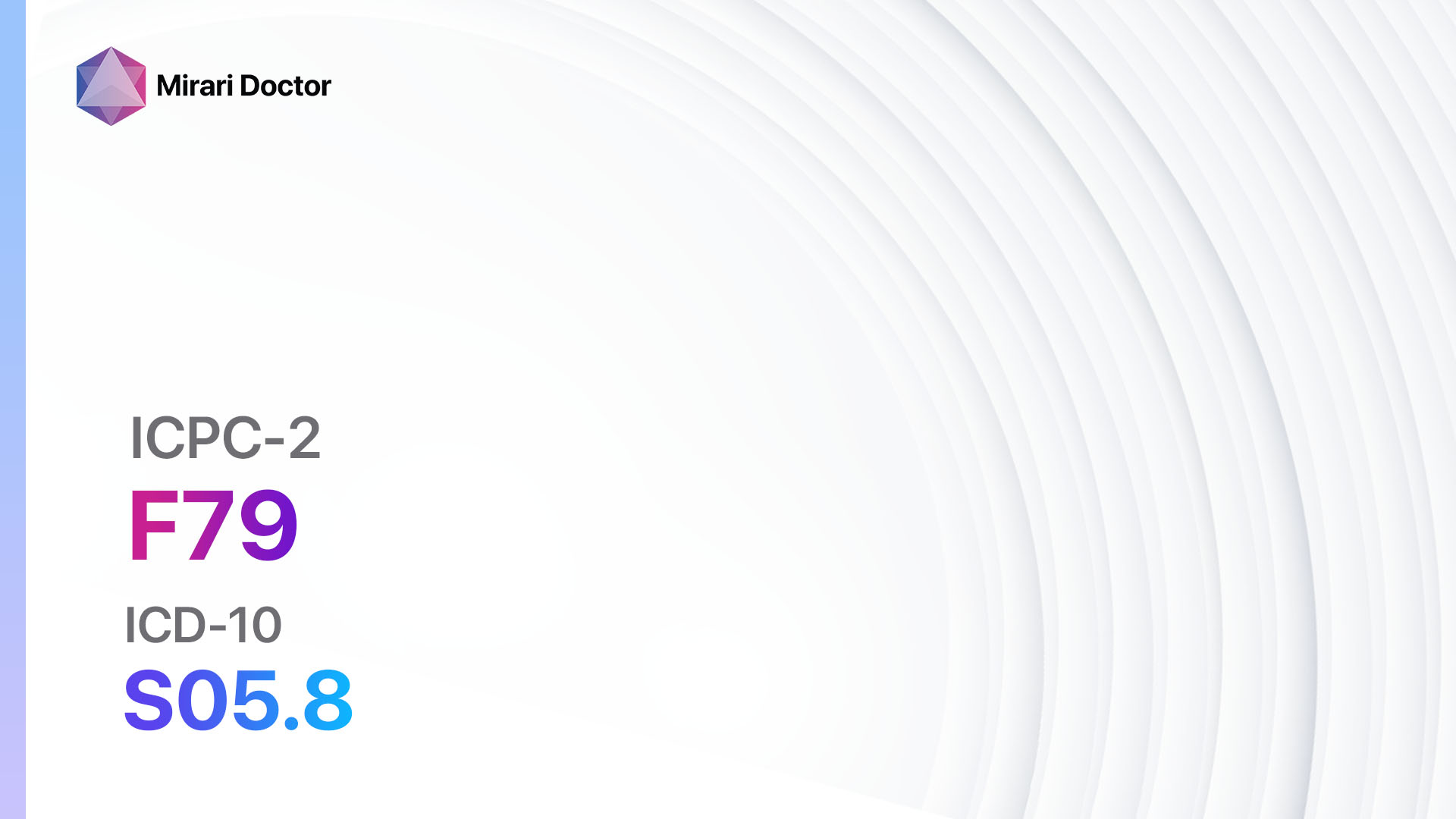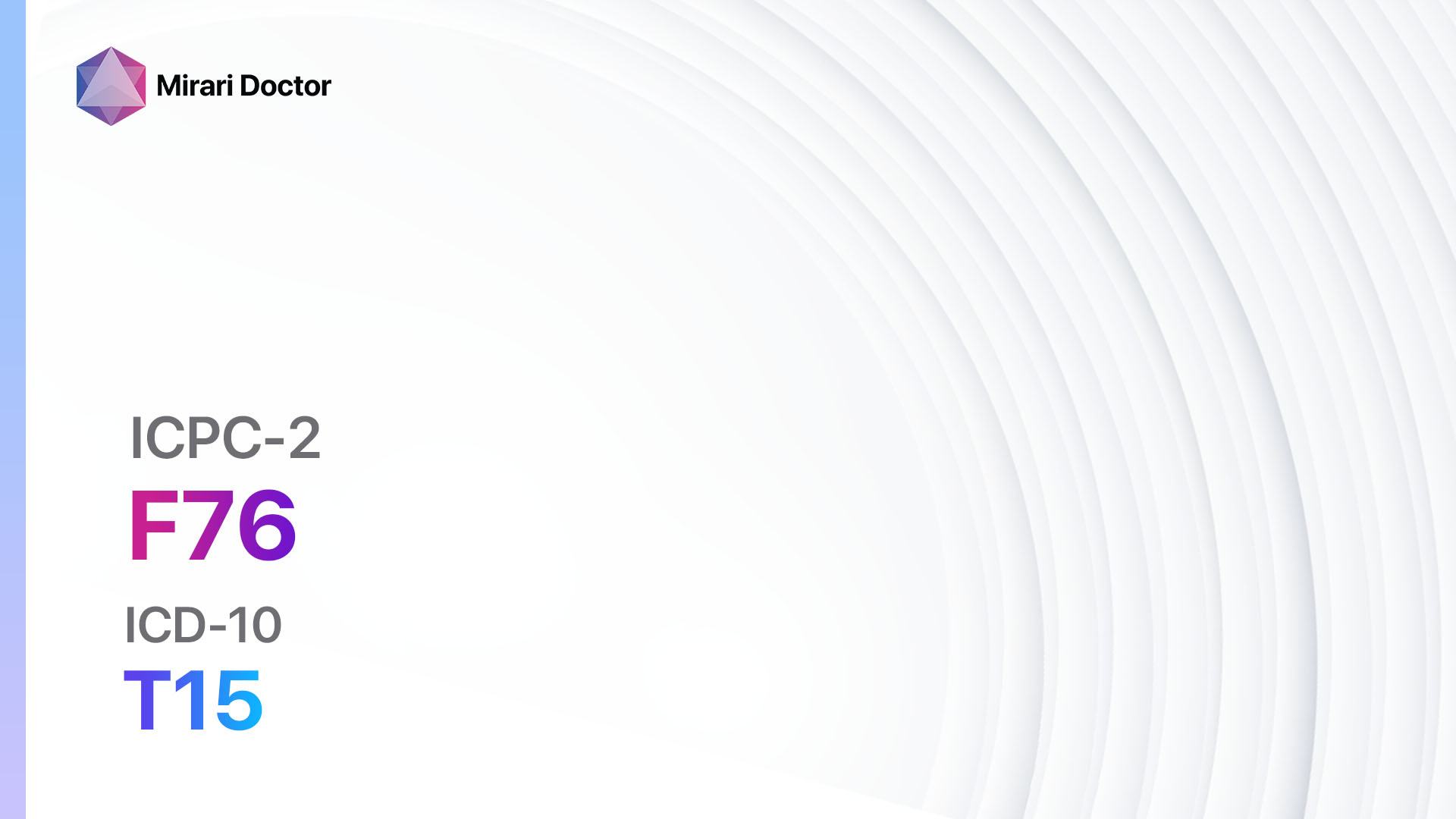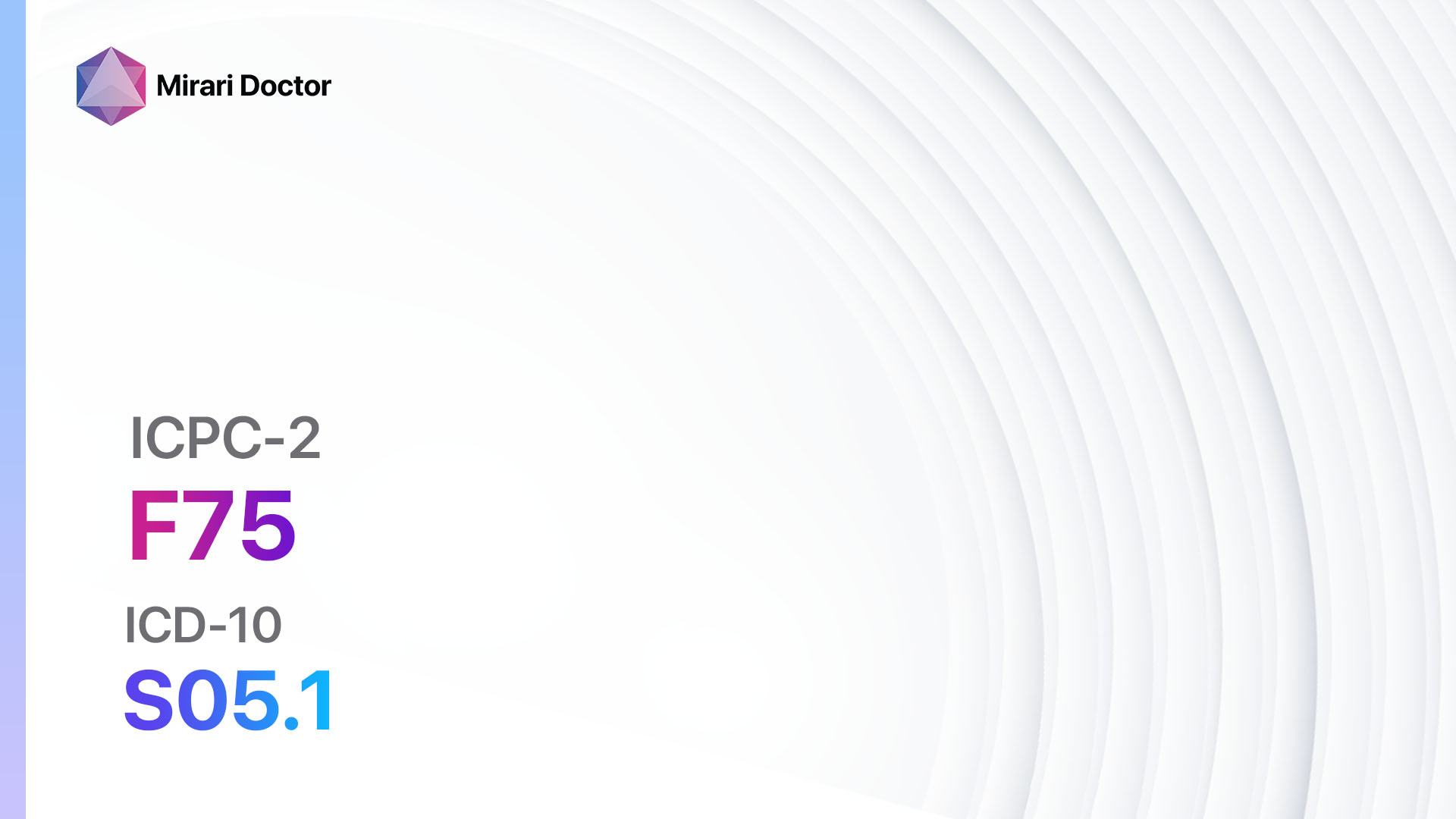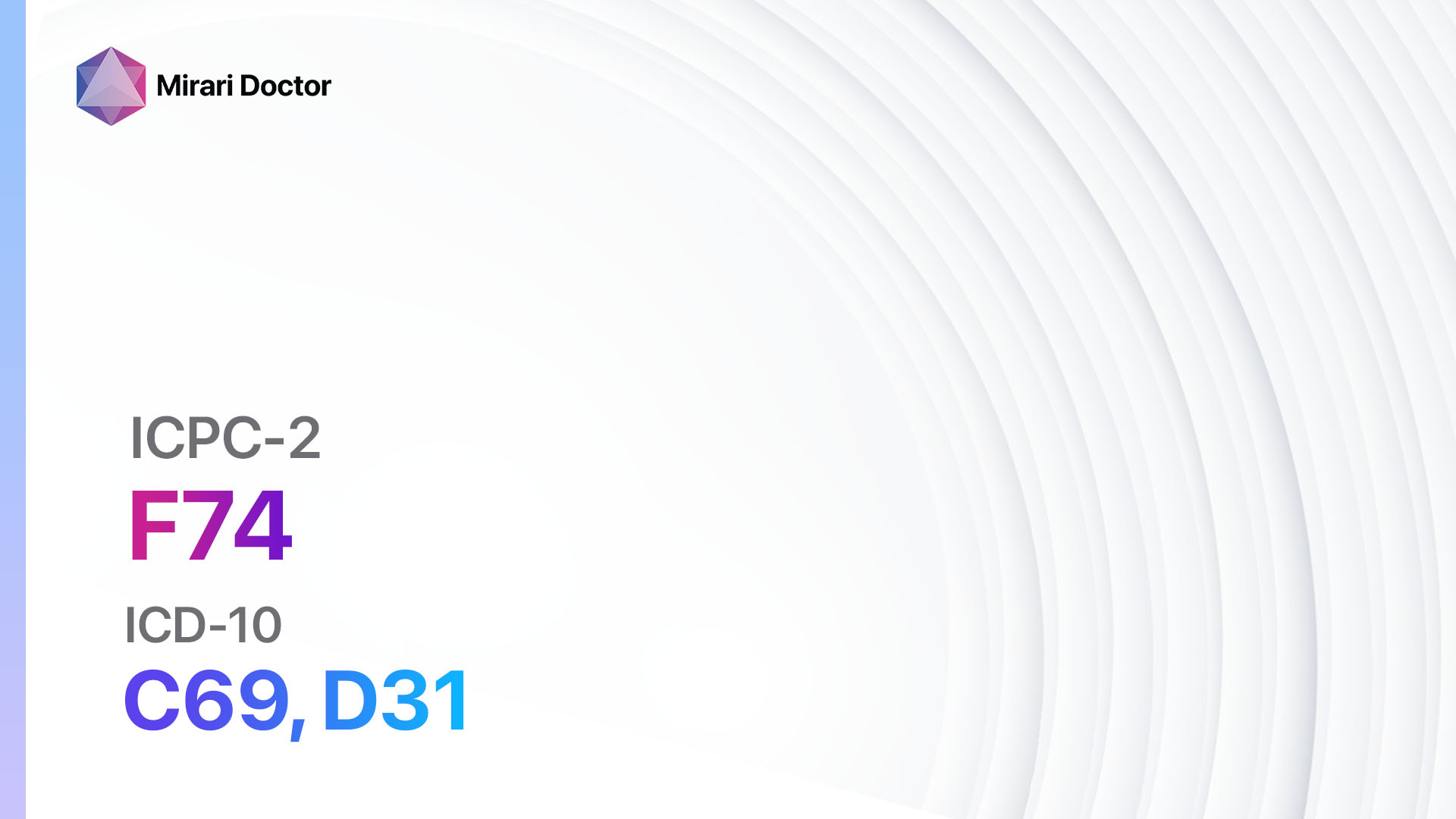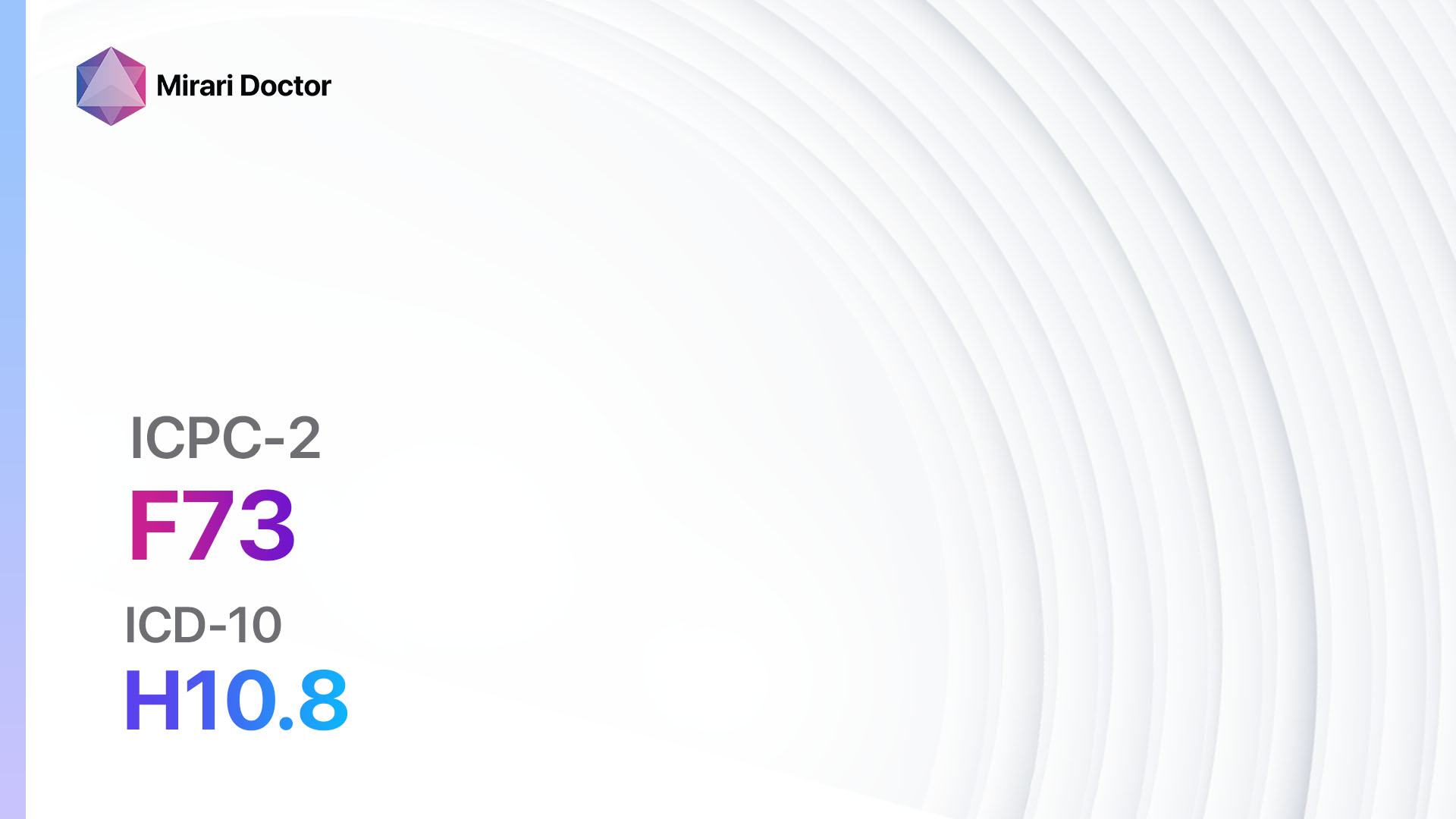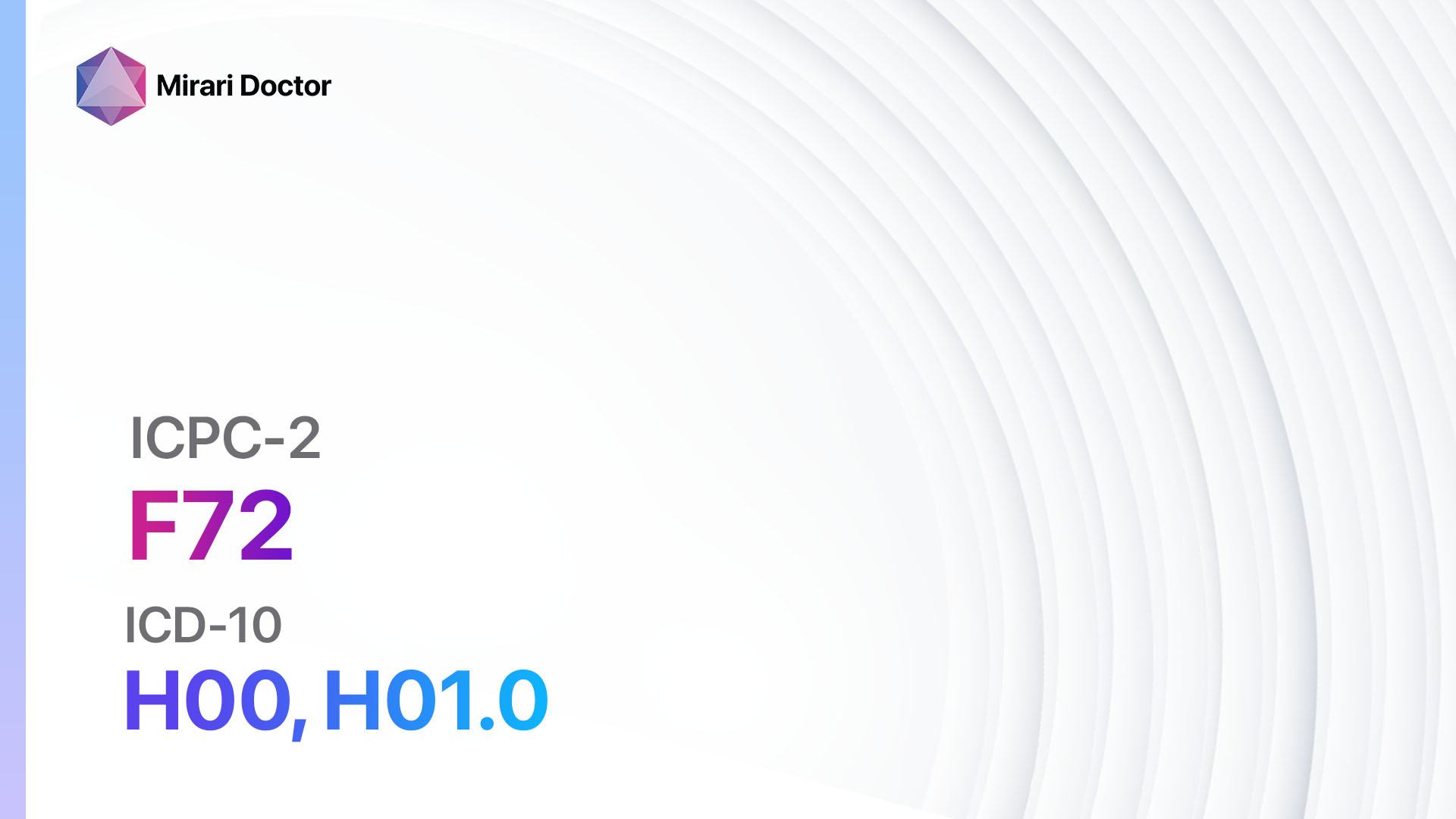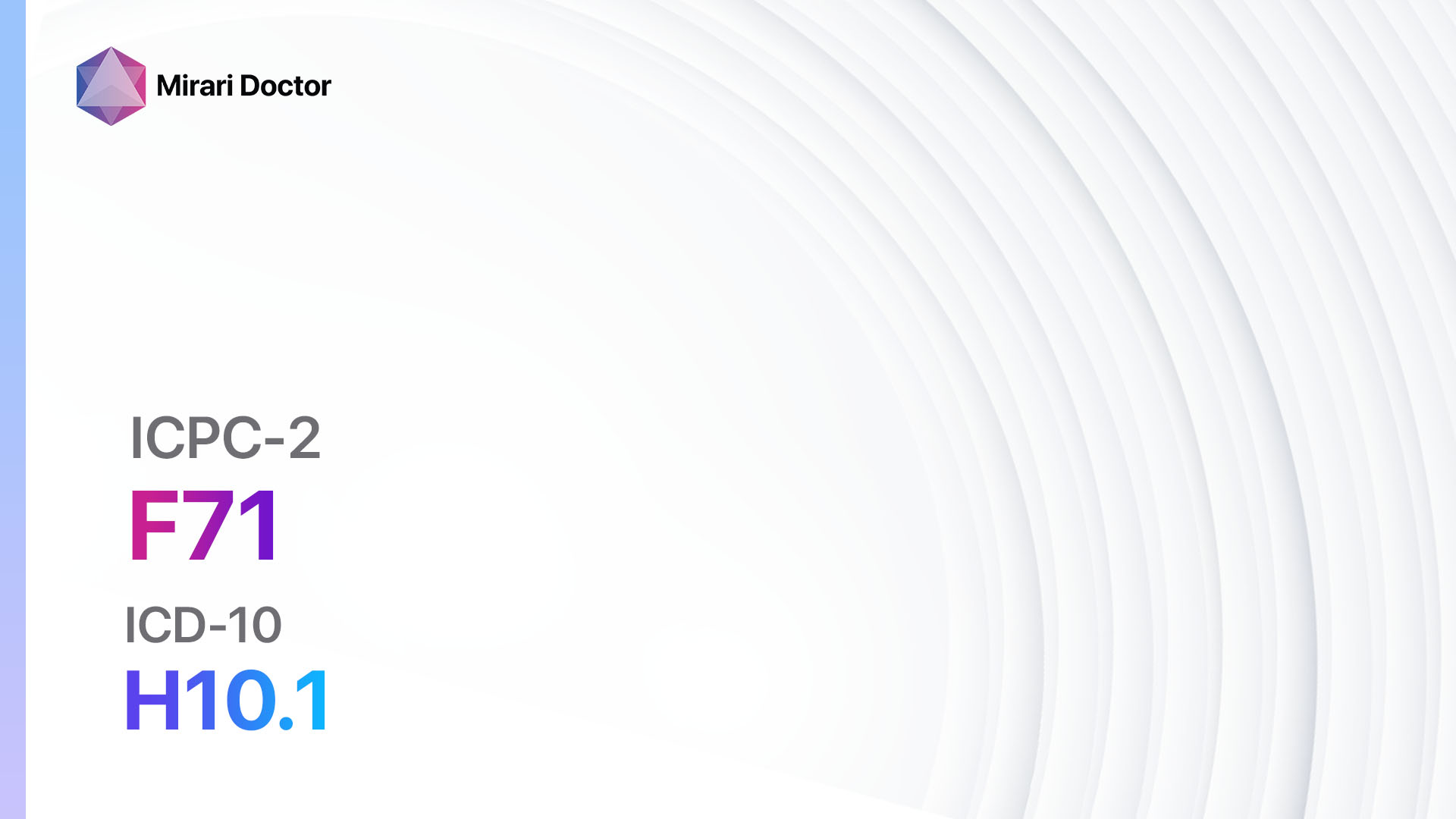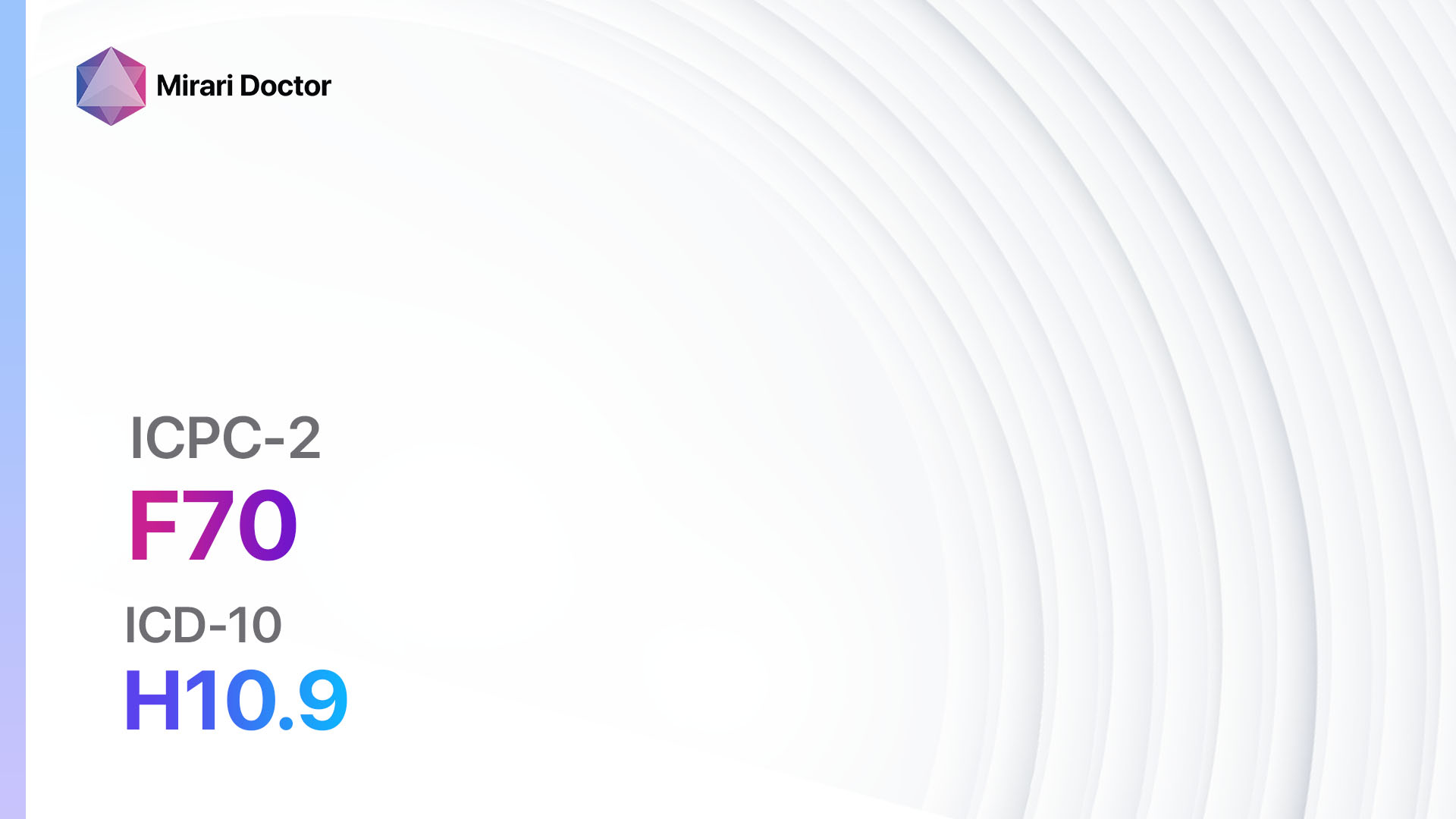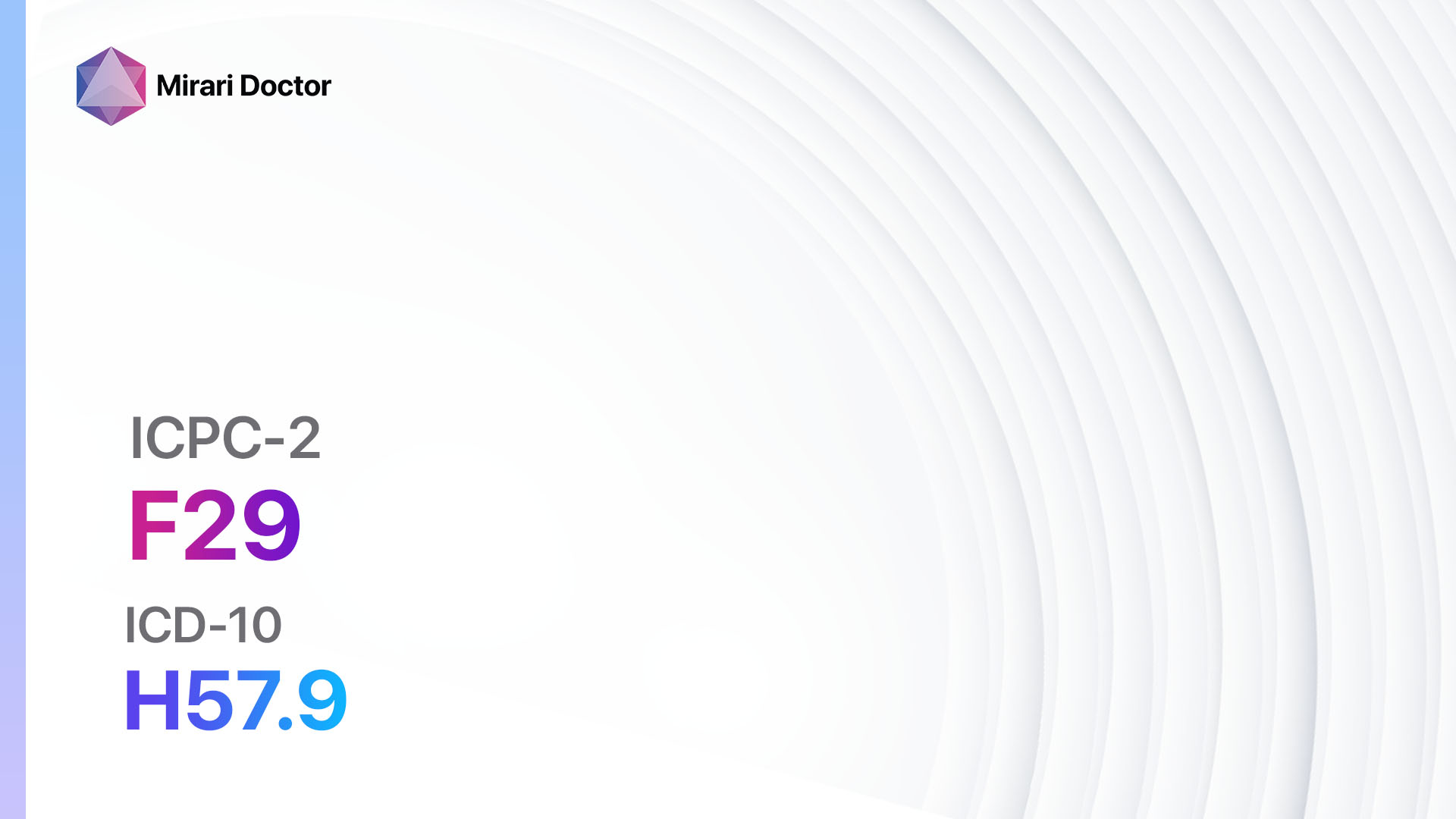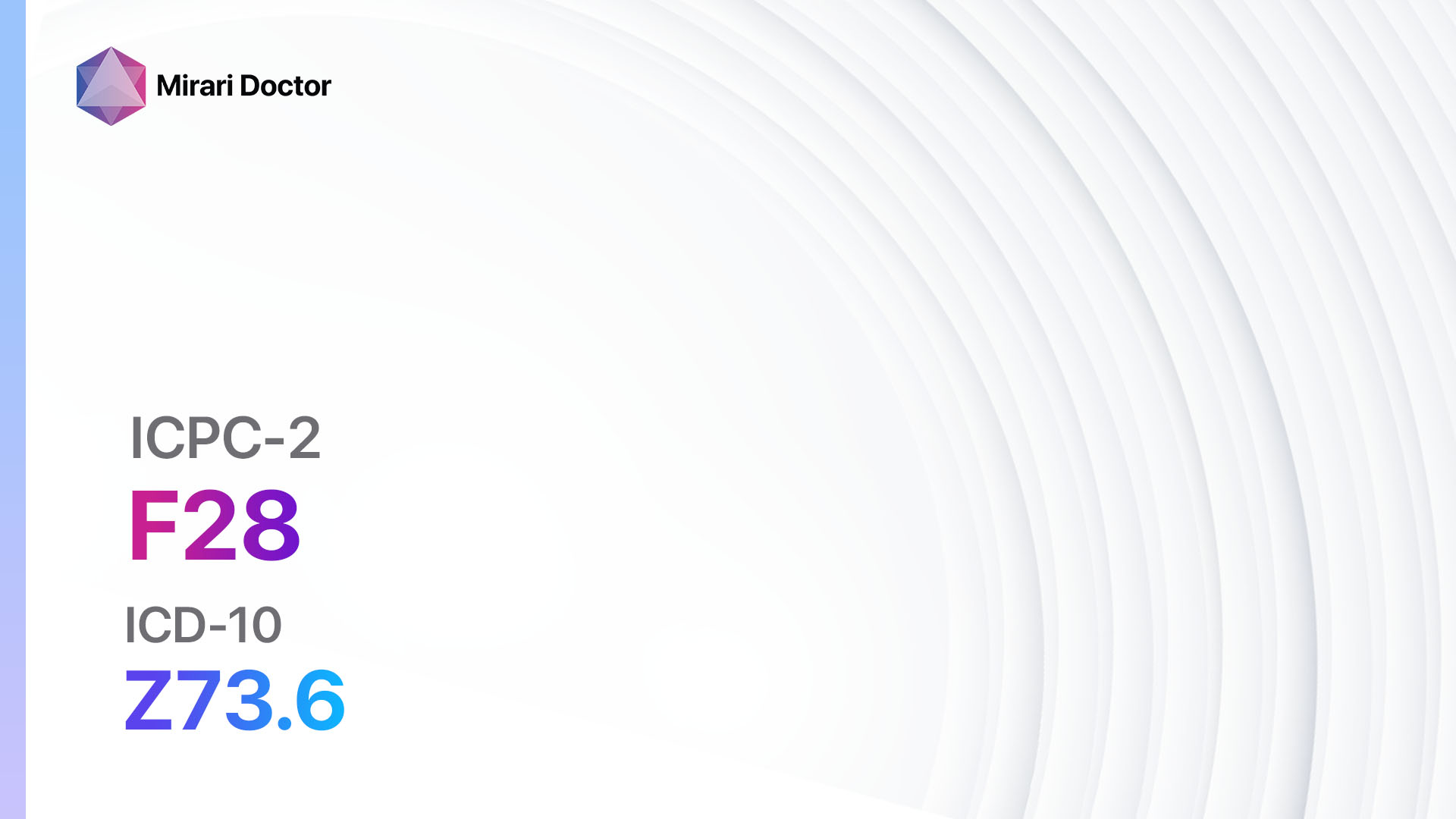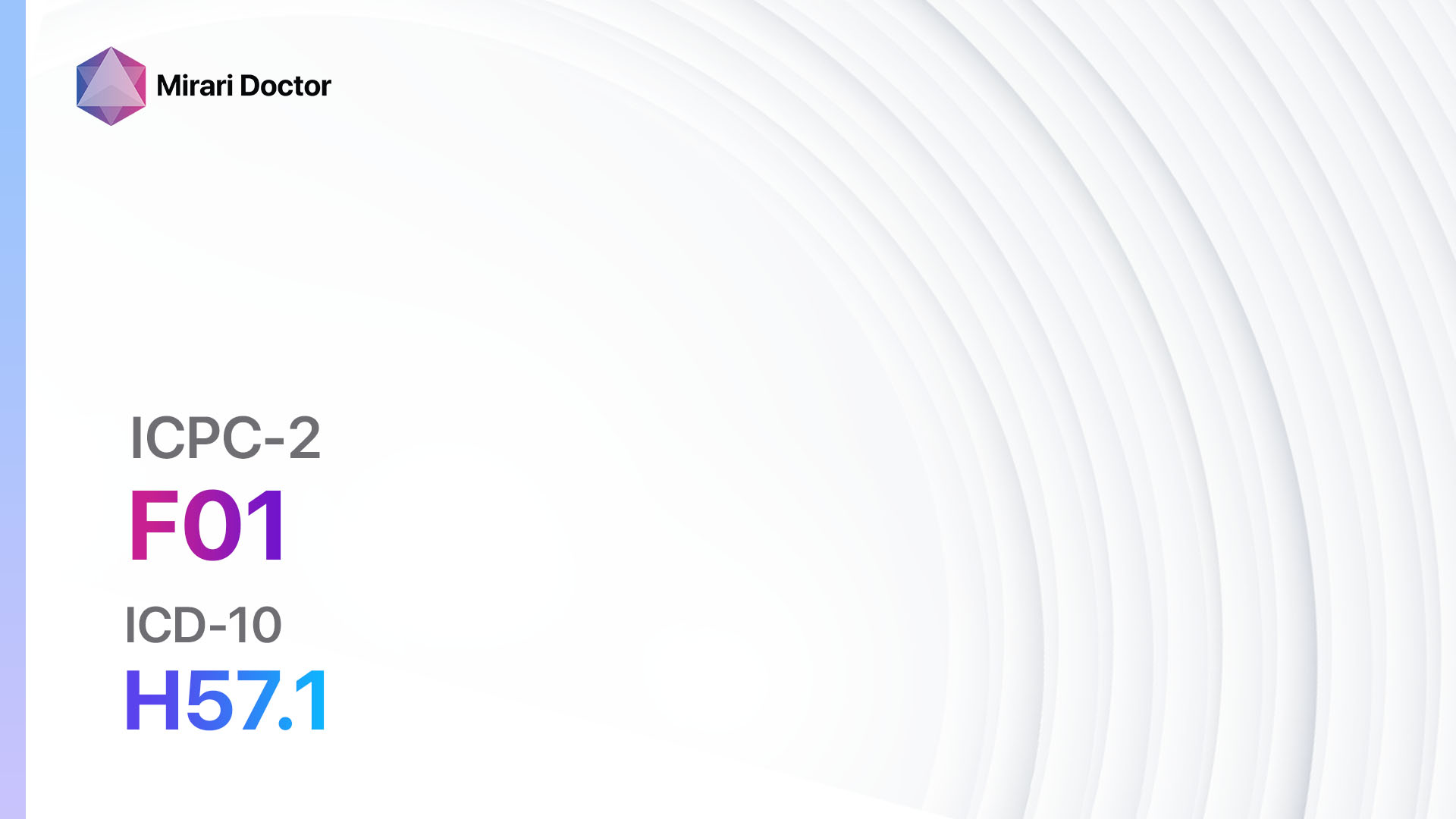
Introduction
Eye pain, also known as ocular pain, refers to any discomfort or pain experienced in or around the eye. It can be caused by various factors, including eye infections, injuries, dryness, or underlying medical conditions[1]. Eye pain can significantly impact a person’s quality of life and may require prompt medical attention[2]. The aim of this guide is to provide healthcare professionals with a comprehensive approach to diagnosing and managing eye pain.
Codes
Symptoms
- Eye redness: The affected eye may appear red or bloodshot[5].
- Eye discharge: The eye may produce excessive tears or discharge[5].
- Blurred vision: Vision may become blurry or distorted[6].
- Sensitivity to light: The eye may become more sensitive to light[6].
- Eye swelling: The eyelids or the area around the eye may become swollen[7].
- Foreign body sensation: The person may feel like there is something in their eye[7].
- Eye discomfort or pain: The person may experience aching, burning, or sharp pain in or around the eye[8].
Causes
- Eye infections: Bacterial, viral, or fungal infections can cause eye pain[1].
- Eye injuries: Trauma to the eye, such as a scratch or foreign body, can lead to eye pain[1].
- Dry eyes: Insufficient tear production or poor tear quality can cause eye pain[1].
- Allergies: Allergic reactions can cause eye pain, itching, and redness[1].
- Corneal abrasion: A scratch on the cornea can result in eye pain[1].
- Glaucoma: Increased pressure within the eye can cause eye pain[1].
- Conjunctivitis: Inflammation of the conjunctiva can lead to eye pain[1].
- Sinusitis: Inflammation of the sinuses can cause referred eye pain[1].
Diagnostic Steps
Medical History
- Gather information about the onset, duration, and progression of eye pain[9].
- Ask about any recent eye injuries, infections, or exposure to allergens[9].
- Inquire about other symptoms, such as redness, discharge, or changes in vision[9].
- Assess the patient’s medical history, including any underlying medical conditions or medications that may contribute to eye pain[9].
Physical Examination
- Inspect the affected eye for redness, swelling, discharge, or foreign bodies[9].
- Assess visual acuity and perform a visual field examination[9].
- Examine the eyelids, conjunctiva, cornea, and anterior chamber for any abnormalities[9].
- Palpate the sinuses to evaluate for sinusitis-related eye pain[9].
Laboratory Tests
- Complete blood count (CBC): To assess for signs of infection or inflammation[9].
- Erythrocyte sedimentation rate (ESR) or C-reactive protein (CRP): To evaluate for systemic inflammation[9].
- Tear film evaluation: To assess tear production and quality in cases of dry eyes[9].
- Allergy testing: To identify specific allergens that may be causing eye pain[9].
Diagnostic Imaging
- Slit-lamp examination: To examine the anterior segment of the eye in detail[9].
- Fluorescein staining: To detect corneal abrasions or ulcers[9].
- Tonometry: To measure intraocular pressure and assess for glaucoma[9].
- Sinus imaging (CT or MRI): To evaluate for sinusitis-related eye pain[9].
Other Tests
- Schirmer’s test: To measure tear production in cases of suspected dry eyes[9].
- Corneal sensitivity testing: To assess corneal nerve function[9].
- Intraocular pressure monitoring: To evaluate for fluctuations in intraocular pressure[9].
Follow-up and Patient Education
- Schedule a follow-up appointment to monitor the patient’s progress and response to treatment[9].
- Educate the patient about the importance of proper eye hygiene and avoiding eye irritants[9].
- Provide information on the potential complications of untreated eye pain and when to seek immediate medical attention[9].
Possible Interventions
Traditional Interventions
Medications:
Top 5 drugs for Eye pain:
- Artificial tears:
- Cost: $5-$15 per bottle.
- Contraindications: Hypersensitivity to ingredients.
- Side effects: Temporary blurred vision.
- Severe side effects: Uncommon.
- Drug interactions: None.
- Warning: Use as directed and avoid contamination.
- Antibiotic eye drops (e.g., Tobramycin, Ciprofloxacin):
- Cost: $10-$30 per bottle.
- Contraindications: Hypersensitivity to ingredients.
- Side effects: Temporary stinging or burning sensation.
- Severe side effects: Uncommon.
- Drug interactions: None.
- Warning: Use as directed and complete the full course of treatment.
- Steroid eye drops (e.g., Prednisolone, Dexamethasone):
- Cost: $10-$30 per bottle.
- Contraindications: Active viral or fungal eye infections.
- Side effects: Temporary increase in eye pressure.
- Severe side effects: Uncommon.
- Drug interactions: None.
- Warning: Use as directed and do not abruptly stop treatment.
- Antihistamine eye drops (e.g., Ketotifen, Olopatadine):
- Cost: $10-$30 per bottle.
- Contraindications: Hypersensitivity to ingredients.
- Side effects: Temporary stinging or burning sensation.
- Severe side effects: Uncommon.
- Drug interactions: None.
- Warning: Use as directed and avoid contact lens use during treatment.
- Nonsteroidal anti-inflammatory drugs (NSAIDs) (e.g., Ketorolac, Bromfenac):
- Cost: $10-$30 per bottle.
- Contraindications: Active peptic ulcer disease, bleeding disorders.
- Side effects: Temporary stinging or burning sensation.
- Severe side effects: Uncommon.
- Drug interactions: None.
- Warning: Use as directed and avoid prolonged use.
Alternative Drugs:
- Oral analgesics (e.g., Acetaminophen, Ibuprofen): Can provide temporary relief from eye pain. Cost: $5-$15 per bottle.
- Antiviral eye drops (e.g., Ganciclovir, Trifluridine): Used for eye pain caused by viral infections. Cost: $50-$100 per bottle.
- Antifungal eye drops (e.g., Natamycin, Amphotericin B): Used for eye pain caused by fungal infections. Cost: $50-$100 per bottle.
- Cycloplegic eye drops (e.g., Tropicamide, Cyclopentolate): Used to dilate the pupil and relieve eye pain. Cost: $10-$30 per bottle.
- Topical anesthetics (e.g., Proparacaine, Tetracaine): Provide temporary numbing of the eye. Cost: $10-$30 per bottle.
Surgical Procedures:
- Surgical interventions for eye pain are rare and depend on the underlying cause. Examples include:
- Corneal transplant: Used for severe corneal damage or disease. Cost: $5,000-$10,000.
- Drainage of abscess or cyst: Used for localized infections or fluid collections. Cost: $1,000-$5,000.
- Removal of foreign body: Used for cases of foreign bodies embedded in the eye. Cost: $500-$2,000.
Alternative Interventions
- Warm compresses: Applying warm compresses to the affected eye can help relieve eye pain and reduce inflammation. Cost: $5-$10 for a reusable compress.
- Cold compresses: Applying cold compresses to the affected eye can help numb the area and reduce pain. Cost: $5-$10 for a reusable compress.
- Eye massage: Gentle massage around the eye area can help improve blood circulation and alleviate eye pain. Cost: Free.
- Eye exercises: Performing eye exercises, such as blinking or rolling the eyes, can help relieve eye strain and reduce pain. Cost: Free.
- Herbal eye drops: Some herbal eye drops, such as chamomile or calendula, may provide relief from eye pain. Cost: $10-$20 per bottle.
Lifestyle Interventions
- Resting the eyes: Taking regular breaks from activities that strain the eyes, such as prolonged computer use, can help alleviate eye pain. Cost: Free.
- Proper eye hygiene: Practicing good eye hygiene, such as washing hands before touching the eyes and avoiding rubbing the eyes, can prevent eye infections and reduce eye pain. Cost: Free.
- Using protective eyewear: Wearing sunglasses or safety goggles can protect the eyes from injury and reduce eye pain. Cost: $10-$50 for sunglasses or safety goggles.
- Avoiding eye irritants: Avoiding exposure to smoke, dust, or other irritants can help prevent eye pain. Cost: Free.
- Maintaining a healthy lifestyle: Eating a balanced diet, staying hydrated, and getting regular exercise can promote overall eye health and reduce the risk of eye pain. Cost: Varies.
It is important to note that the cost ranges provided are approximate and may vary depending on the location and availability of the interventions.
Mirari Cold Plasma Alternative Intervention
Understanding Mirari Cold Plasma
- Safe and Non-Invasive Treatment: Mirari Cold Plasma is a safe and non-invasive treatment option for various skin conditions. It does not require incisions, minimizing the risk of scarring, bleeding, or tissue damage.
- Efficient Extraction of Foreign Bodies: Mirari Cold Plasma facilitates the removal of foreign bodies from the skin by degrading and dissociating organic matter, allowing easier access and extraction.
- Pain Reduction and Comfort: Mirari Cold Plasma has a local analgesic effect, providing pain relief during the treatment, making it more comfortable for the patient.
- Reduced Risk of Infection: Mirari Cold Plasma has antimicrobial properties, effectively killing bacteria and reducing the risk of infection.
- Accelerated Healing and Minimal Scarring: Mirari Cold Plasma stimulates wound healing and tissue regeneration, reducing healing time and minimizing the formation of scars.
Mirari Cold Plasma Prescription
Video instructions for using Mirari Cold Plasma Device – F01 Eye pain (ICD-10:H57.1)
| Mild | Moderate | Severe |
| Mode setting: 1 (Infection) Location: 7 (Neuro system & ENT) Morning: 15 minutes, Evening: 15 minutes | Mode setting: 1 (Infection) Location: 7 (Neuro system & ENT) Morning: 30 minutes, Lunch: 30 minutes, Evening: 30 minutes | Mode setting: 1 (Infection) Location: 7 (Neuro system & ENT) Morning: 30 minutes, Lunch: 30 minutes, Evening: 30 minutes |
| Mode setting: 2 (Wound Healing) Location: 7 (Neuro system & ENT) Morning: 15 minutes, Evening: 15 minutes | Mode setting: 2 (Wound Healing) Location: 7 (Neuro system & ENT) Morning: 30 minutes, Lunch: 30 minutes, Evening: 30 minutes | Mode setting: 2 (Wound Healing) Location: 7 (Neuro system & ENT) Morning: 30 minutes, Lunch: 30 minutes, Evening: 30 minutes |
| Modesetting:6 (Liver/Kidney Therapy) Location:3 (Kidney, Liver & Spleen) Morning:15 minutes, Evening:15minutes | Modesetting:6 (Liver/Kidney Therapy) Location:3 (Kidney, Liver & Spleen) Morning:30 minutes, Lunch:30 minutes, Evening:30 minutes | Modesetting:6 (Liver/Kidney Therapy) Location:3 (Kidney, Liver & Spleen) Morning:30 minutes, Lunch:30 minutes, Evening:30 minutes |
| Total Morning: 45 minutes approx. $7.50 USD, Evening: 45 minutes approx. $7.50 USD | Total Morning: 90 minutes approx. $15 USD, Lunch: 90 minutes approx. $15 USD, Evening: 90 minutes approx. $15 USD, | Total Morning: 90 minutes approx. $15 USD, Lunch: 90 minutes approx. $15 USD, Evening: 90 minutes approx. $15 USD, |
| Usual treatment for 7-60 days approx. $105 USD – $900 USD | Usual treatment for 6-8 weeks approx. $1,890USD – $2,520 USD | Usual treatment for 3-6 months approx. $4,050 USD – $8,100 USD |
 |
|
Use the Mirari Cold Plasma device to treat Eye pain effectively.
WARNING: MIRARI COLD PLASMA IS DESIGNED FOR THE HUMAN BODY WITHOUT ANY ARTIFICIAL OR THIRD PARTY PRODUCTS. USE OF OTHER PRODUCTS IN COMBINATION WITH MIRARI COLD PLASMA MAY CAUSE UNPREDICTABLE EFFECTS, HARM OR INJURY. PLEASE CONSULT A MEDICAL PROFESSIONAL BEFORE COMBINING ANY OTHER PRODUCTS WITH USE OF MIRARI[10].
Step 1: Cleanse the Skin
- Start by cleaning the affected area of the skin with a gentle cleanser or mild soap and water. Gently pat the area dry with a clean towel.
Step 2: Prepare the Mirari Cold Plasma device
- Ensure that the Mirari Cold Plasma device is fully charged or has fresh batteries as per the manufacturer’s instructions. Make sure the device is clean and in good working condition.
- Switch on the Mirari device using the power button or by following the specific instructions provided with the device.
- Some Mirari devices may have adjustable settings for intensity or treatment duration. Follow the manufacturer’s instructions to select the appropriate settings based on your needs and the recommended guidelines.
Step 3: Apply the Device
- Place the Mirari device in direct contact with the affected area of the skin. Gently glide or hold the device over the skin surface, ensuring even coverage of the area experiencing.
- Slowly move the Mirari device in a circular motion or follow a specific pattern as indicated in the user manual. This helps ensure thorough treatment coverage.
Step 4: Monitor and Assess:
- Keep track of your progress and evaluate the effectiveness of the Mirari device in managing your Eye pain. If you have any concerns or notice any adverse reactions, consult with your health care professional.
Note
This guide is for informational purposes only and should not replace the advice of a medical professional. Always consult with your healthcare provider or a qualified medical professional for personal advice, diagnosis, or treatment. Do not solely rely on the information presented here for decisions about your health. Use of this information is at your own risk. The authors of this guide, nor any associated entities or platforms, are not responsible for any potential adverse effects or outcomes based on the content.
Mirari Cold Plasma System Disclaimer
- Purpose: The Mirari Cold Plasma System is a Class 2 medical device designed for use by trained healthcare professionals. It is registered for use in Thailand and Vietnam. It is not intended for use outside of these locations.
- Informational Use: The content and information provided with the device are for educational and informational purposes only. They are not a substitute for professional medical advice or care.
- Variable Outcomes: While the device is approved for specific uses, individual outcomes can differ. We do not assert or guarantee specific medical outcomes.
- Consultation: Prior to utilizing the device or making decisions based on its content, it is essential to consult with a Certified Mirari Tele-Therapist and your medical healthcare provider regarding specific protocols.
- Liability: By using this device, users are acknowledging and accepting all potential risks. Neither the manufacturer nor the distributor will be held accountable for any adverse reactions, injuries, or damages stemming from its use.
- Geographical Availability: This device has received approval for designated purposes by the Thai and Vietnam FDA. As of now, outside of Thailand and Vietnam, the Mirari Cold Plasma System is not available for purchase or use.
References
- Jacobs DS. Diagnosis and Treatment of Ocular Pain: the Ophthalmologist’s Perspective. Curr Ophthalmol Rep. 2017;5(4):271-275. doi:10.1007/s40135-017-0153-0
- Belmonte C, Nichols JJ, Cox SM, et al. TFOS DEWS II pain and sensation report. Ocul Surf. 2017;15(3):404-437. doi:10.1016/j.jtos.2017.05.002
- WONCA International Classification Committee. ICPC-2: International Classification of Primary Care. 2nd ed. Oxford University Press; 1998.
- World Health Organization. ICD-10: international statistical classification of diseases and related health problems: tenth revision. 2nd ed. World Health Organization; 2004.
- Friedman NJ, Kaiser PK, Pineda R. The Massachusetts Eye and Ear Infirmary Illustrated Manual of Ophthalmology. 4th ed. Elsevier Saunders; 2014.
- Kanski JJ, Bowling B. Clinical Ophthalmology: A Systematic Approach. 8th ed. Elsevier; 2016.
- Ehlers JP, Shah CP, eds. The Wills Eye Manual: Office and Emergency Room Diagnosis and Treatment of Eye Disease. 7th ed. Wolters Kluwer; 2017.
- Rosenfield M. Computer vision syndrome: a review of ocular causes and potential treatments. Ophthalmic Physiol Opt. 2011;31(5):502-515. doi:10.1111/j.1475-1313.2011.00834.x
- Galor A, Levitt RC, Felix ER, Martin ER, Sarantopoulos CD. Neuropathic ocular pain: an important yet underevaluated feature of dry eye. Eye (Lond). 2015;29(3):301-312. doi:10.1038/eye.2014.263
- Craig JP, Nichols KK, Akpek EK, et al. TFOS DEWS II Definition and Classification Report. Ocul Surf. 2017;15(3):276-283.
Related articles
Made in USA


